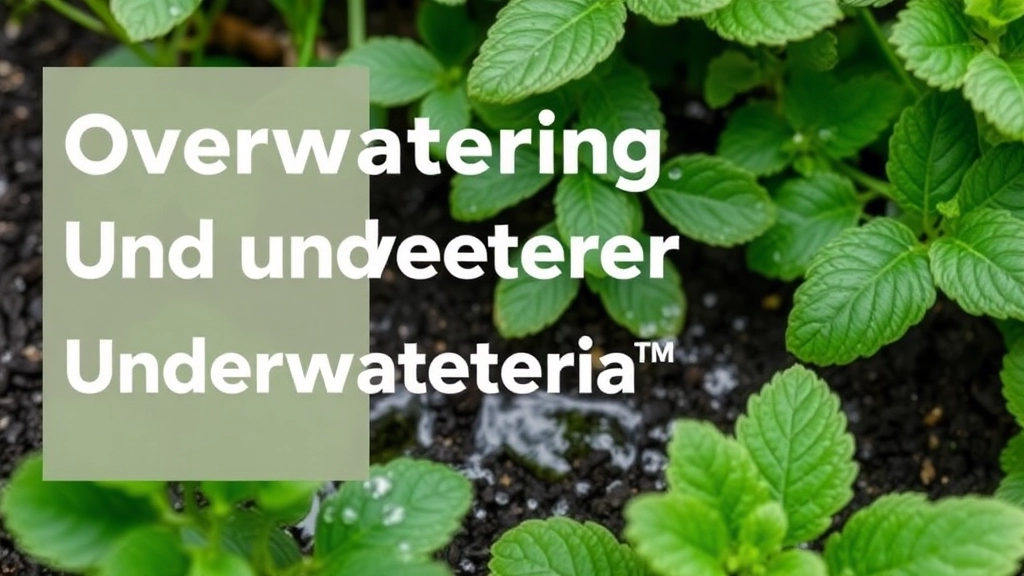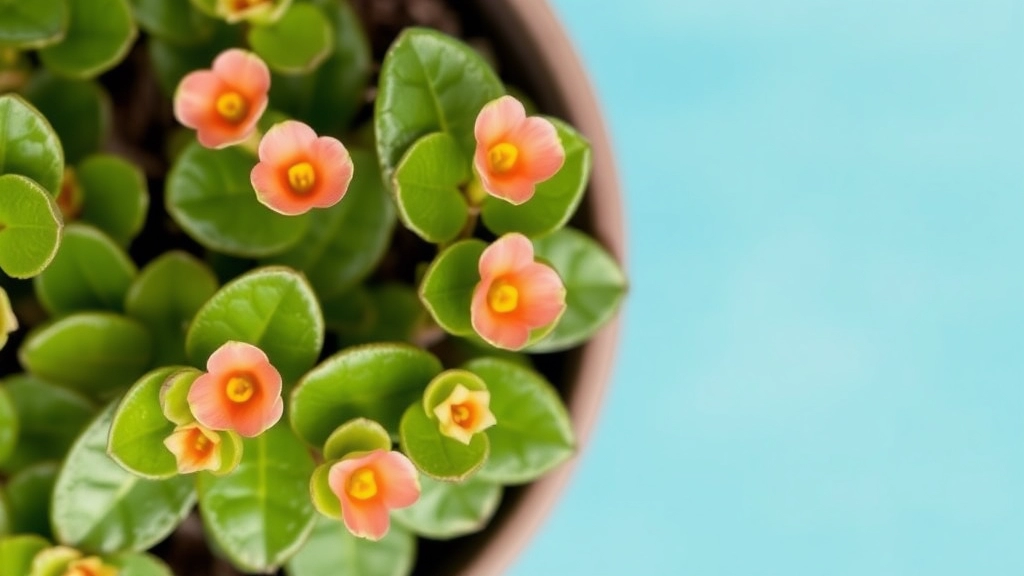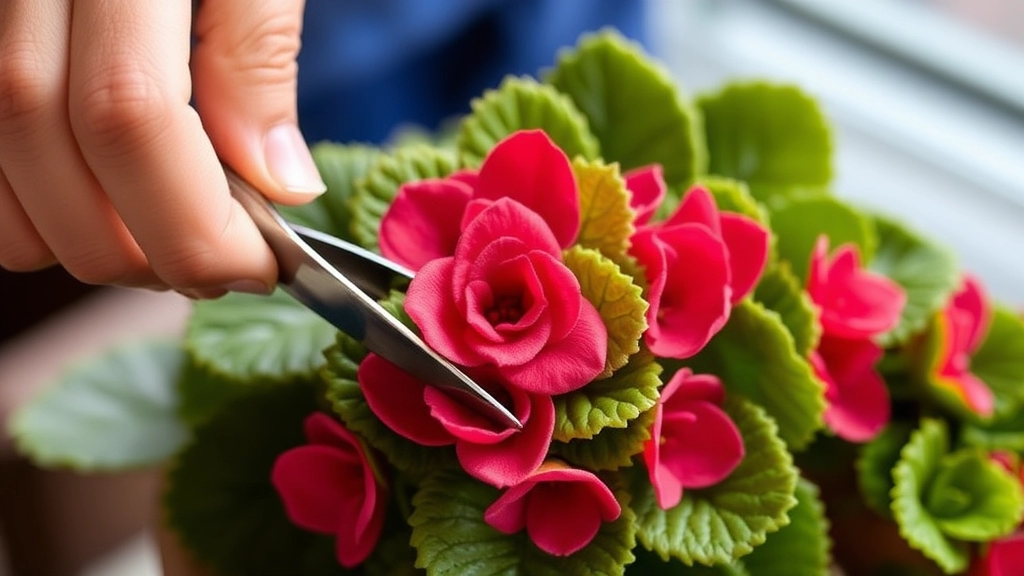Kalanchoe Leaves Curling
Noticed your Kalanchoe leaves curling? You’re not alone. Many plant enthusiasts face this issue, and it often stems from environmental stress. Factors like improper lighting, inconsistent watering, and fluctuating temperatures can cause your Kalanchoe leaves to curl. Understanding these triggers is the first step to restoring your plant’s health.
Common Causes
Besides environmental stress, nutrient deficiencies and pest infestations are common culprits behind Kalanchoe leaves curling. Ensuring your plant gets the right nutrients and keeping an eye out for pests can make a significant difference.
Next Steps
Stay tuned as we dive into each cause and provide actionable solutions to keep your Kalanchoe thriving.
Causes of Kalanchoe Leaf Curling
Are you noticing your Kalanchoe’s leaves curling? This can be a concerning sight for any plant enthusiast. Leaf curling in Kalanchoe can signal underlying issues that require immediate attention. Understanding these causes is essential for maintaining a healthy plant.
Overwatering and Underwatering Issues

Ever looked at your Kalanchoe and thought, “Why are my leaves curling?” It’s a common worry, and trust me, overwatering and underwatering are often the culprits.
Signs of Overwatering
- Yellowing Leaves: If your leaves are turning yellow and mushy, it’s a classic sign of overwatering.
- Root Rot: This sneaky issue can occur when the roots sit in soggy soil. You might notice a foul smell if you check the pot.
- Leaf Curling: Leaves may curl downwards as a cry for help.
Signs of Underwatering
- Crispy Edges: If the edges of your leaves feel dry and crispy, your Kalanchoe is thirsty.
- Drooping Leaves: Underwatered plants often droop as they lose their firm structure.
Finding the Balance
Getting the watering just right can feel like a juggling act, but here are some tips to help you out:
- Check the Soil: Stick your finger about an inch into the soil. If it’s dry, it’s time to water.
- Use Well-Draining Soil: A mix designed for succulents helps prevent water from pooling.
- Water Thoroughly: When you do water, soak the soil until it drains from the bottom.
- Adjust for Seasons: In winter, your Kalanchoe needs less water, so dial it back.
Are your Kalanchoe leaves curling despite your best care efforts?
One often overlooked factor could be the light and temperature conditions in which your plant is thriving.
Kalanchoe plants are native to warm, sunny environments and thrive under specific conditions.
### Light Requirements
– **Bright, Indirect Light:** Kalanchoe prefers bright, indirect sunlight. Too much direct sunlight can scorch the leaves, while too little can cause them to stretch and curl.
– **Signs of Insufficient Light:** If your Kalanchoe is leaning towards the light source or has pale leaves, it may not be getting enough brightness.
### Temperature Preferences
– **Ideal Temperature Range:** Kalanchoe thrives in temperatures between 20°C to 25°C (68°F to 77°F).
– **Cold Sensitivity:** Exposure to temperatures below 10°C (50°F) can cause stress, leading to curling leaves.
### Tips for Optimal Conditions
– **Rotate Your Plant:** Regularly rotate your Kalanchoe to ensure even light exposure on all sides.
– **Avoid Drafts:** Keep your plant away from cold drafts, such as open windows or air conditioning vents.
For more detailed care tips, you might find these guides on [how to fix drooping Kalanchoe leaves](https://planthq.org/how-to-fix-drooping-kalanchoe-leaves-causes-and-solutions/) and [how to grow and care for Kalanchoe Pinnata](https://planthq.org/how-to-grow-and-care-for-kalanchoe-pinnata-tips-and-benefits/) particularly useful.
Nutrient Deficiencies and Their Effects

Have you noticed your Kalanchoe plants looking less vibrant than usual? Nutrient deficiencies could be the culprit behind those curling leaves.
Kalanchoe, like all plants, requires a balanced diet of essential nutrients to thrive. When deprived of these nutrients, your plant can exhibit a variety of distress signals, including leaf curling. Here are some common deficiencies and their effects:
- Nitrogen Deficiency: This leads to yellowing leaves, starting from the older ones. The plant may also exhibit stunted growth.
- Phosphorus Deficiency: A lack of phosphorus can cause dark green or purplish leaves. You might also notice poor flowering.
- Potassium Deficiency: This often results in yellowing leaf edges and overall weaker plants that are more susceptible to diseases.
- Calcium Deficiency: If your Kalanchoe has distorted leaves or tips that are browning, it might be lacking calcium.
To address these issues, consider the following steps:
- Use a Balanced Fertiliser: Opt for a slow-release fertiliser that includes all essential nutrients.
- Regular Soil Testing: Testing your soil can help identify which nutrients are lacking.
- Organic Amendments: Incorporate compost or well-rotted manure to enrich the soil naturally.
- Observe and Adjust: Keep an eye on your plants after fertilising. If symptoms persist, you may need to reassess your nutrient strategy.
Pest Infestations and Remedies
It’s disheartening to see your Kalanchoe struggling, especially when pests are the culprits. Many plant enthusiasts often worry about how to identify and treat these unwelcome guests.
Pest infestations can lead to severe leaf curling and overall plant decline. Common pests that target Kalanchoe include:
- Aphids: Tiny, green or black insects that cluster on new growth.
- Mealybugs: White, cotton-like masses found in leaf joints and on stems.
- Spider Mites: Tiny, spider-like creatures that create fine webbing on leaves.
- Scale Insects: Hard, shell-like bumps on stems and leaves.
To tackle these pests effectively, consider the following remedies:
- Manual Removal: For small infestations, gently wipe pests off with a damp cloth or cotton swab.
- Insecticidal Soap: This is a safe and effective option to spray directly on affected areas.
- Neem Oil: A natural pesticide that disrupts the life cycle of pests. Dilute according to package instructions and apply regularly.
- Diatomaceous Earth: Sprinkle this powder around the base of the plant to deter crawling insects.
- Regular Inspections: Check your Kalanchoe frequently for early signs of infestation. Early detection can save your plant.
- Quarantine New Plants: Always isolate new additions for a few weeks to prevent introducing pests to your collection.
By keeping a vigilant eye on your Kalanchoe and employing these strategies, you can maintain a pest-free environment. For more detailed care tips, check out our pruning Kalanchoe plants guide and our chandelier plant care guide.
Preventing Fungal Infections in Kalanchoe

So, you’ve noticed your Kalanchoe isn’t looking its best. Maybe the leaves are drooping or developing spots. Fungal infections could be lurking, and trust me, they’re not something you want to deal with.
Fungal issues are sneaky little pests that can take hold if you’re not careful. Here’s how to keep your Kalanchoe safe and thriving:
1. Water Wisely
- Avoid Overwatering: Too much water can create a damp environment perfect for fungi. Always let the top inch of soil dry out before watering again.
- Use Well-Draining Soil: A mix designed for succulents or cacti works wonders. It keeps your roots happy and dry.
2. Air Circulation is Key
- Space Out Your Plants: Don’t cram your Kalanchoe in tight spots. Good airflow helps keep moisture levels down.
- Keep Them in Bright, Open Spaces: A sunny window is ideal. Just make sure there’s enough room for air to flow.
3. Monitor Humidity Levels
- Aim for Lower Humidity: Kalanchoe prefers drier air. If you’re in a humid area, consider using a dehumidifier or placing your plant in a less humid room.
4. Regular Inspection
- Check for Signs of Infection: Look for discolored leaves or fuzzy spots. Catching these early can save your plant.
- Remove Affected Leaves: Snip off any infected parts immediately to prevent the spread.
5. Use Fungicide as a Last Resort
If things get out of hand, a gentle fungicide can help. Just make sure it’s safe for indoor plants.
Effective Watering Techniques for Healthy Kalanchoe
Are you struggling with how much water to give your Kalanchoe?
Understanding the right watering techniques is crucial for keeping these lovely succulents healthy and vibrant.
FAQs on Kalanchoe Leaves Curling
Why are my Kalanchoe leaves curling?
Leaf curling in Kalanchoe plants can be caused by a variety of issues including overwatering, underwatering, nutrient deficiencies, and fungal infections.
What are the signs of overwatering my Kalanchoe?
Overwatering can lead to yellowing leaves, root rot, and leaf curling. The leaves may turn mushy and you might notice a foul smell from the soil.
How can I tell if I’m underwatering my Kalanchoe?
Signs of underwatering include crispy edges on the leaves and drooping leaves. The plant loses its firm structure and may appear wilted.
How can I find the right balance for watering my Kalanchoe?
To achieve the right balance, check the soil moisture by sticking your finger about an inch deep into the soil. Use well-draining soil, water thoroughly, and adjust your watering schedule according to the seasons.
Could nutrient deficiencies cause my Kalanchoe leaves to curl?
Yes, nutrient deficiencies can cause leaf curling. Common deficiencies include nitrogen, phosphorus, potassium, and calcium, each presenting different symptoms like yellowing leaves, poor flowering, and distorted leaf growth.
How can I address nutrient deficiencies in my Kalanchoe?
Use a balanced, slow-release fertiliser, regularly test your soil, incorporate organic amendments like compost, and observe your plants to adjust nutrient levels as needed.
What can I do to prevent fungal infections in my Kalanchoe?
To prevent fungal infections, avoid overwatering, use well-draining soil, ensure good air circulation, monitor humidity levels, inspect your plants regularly, and remove any affected leaves immediately. If necessary, use a gentle fungicide safe for indoor plants.
How should I water my Kalanchoe to avoid fungal infections?
Water wisely by letting the top inch of soil dry out before watering again and using well-draining soil to keep the roots dry and happy.
What can I do to improve air circulation for my Kalanchoe?
Space out your plants and keep them in bright, open spaces with good airflow. A sunny window with enough room for air to flow is ideal.
How can I monitor and control humidity levels for my Kalanchoe?
Kalanchoe prefers drier air. If you’re in a humid area, consider using a dehumidifier or placing your plant in a less humid room to maintain lower humidity levels.
What should I look for during regular inspections of my Kalanchoe?
During inspections, look for discolored leaves or fuzzy spots that indicate infection. Early detection can help save your plant. Remove any infected parts immediately to prevent the spread.
References
-
Why Are My Kalanchoe Leaves Curling? – Gardening Know How
-
Kalanchoe Plant Care: How to Grow and Care for Kalanchoe – The Spruce
-
Kalanchoe: How to Grow and Care for Kalanchoe Plants – The Old Farmer’s Almanac
